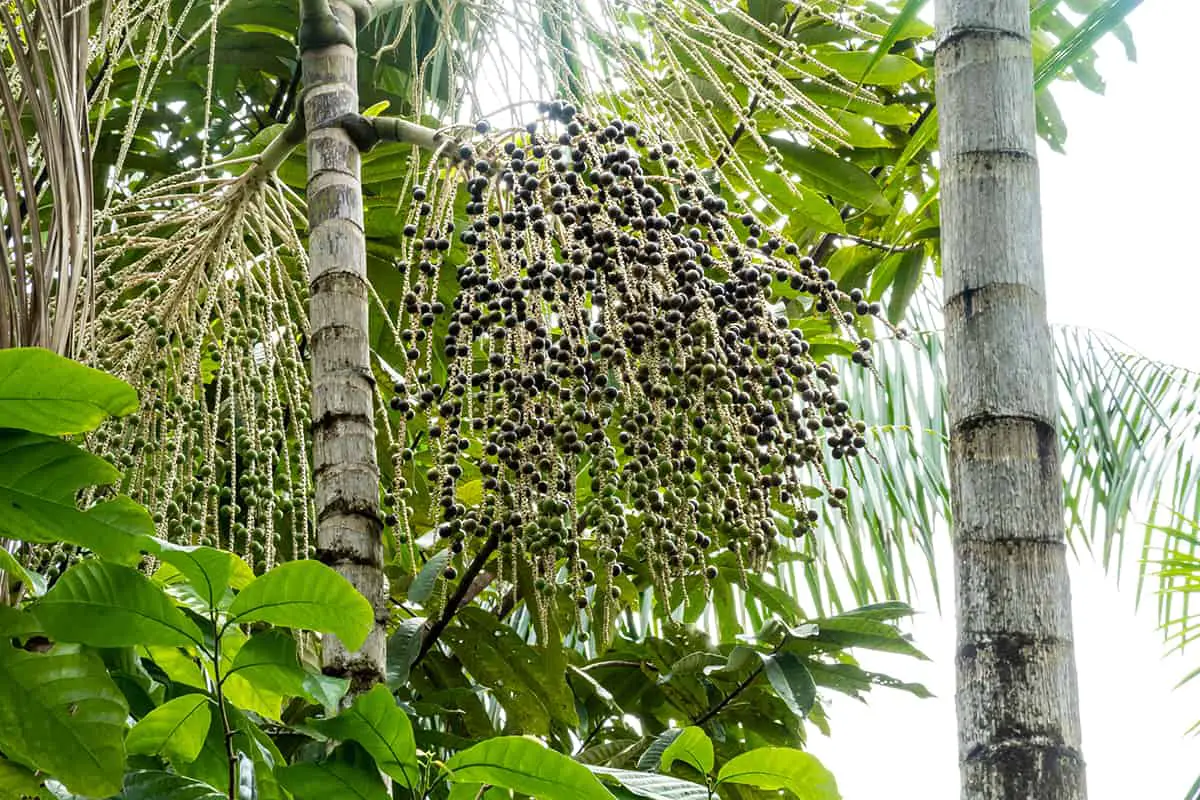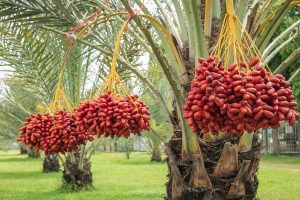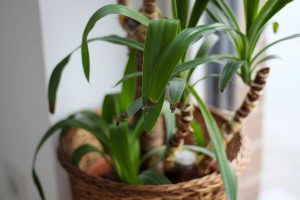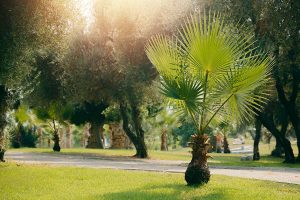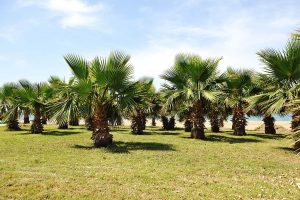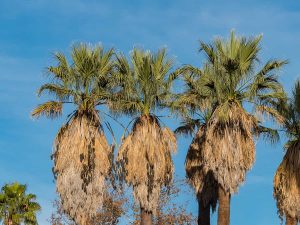The Acai Palm is native to the Amazon rainforest, primarily growing in Brazil, but it can also be found in swamplands and floodplains across South America. It is an evergreen tree that has multiple tall and slender trunks and long, elegant pinnate leaves.
The tree is harvested for many different uses locally; for example, the leaves are used in weaving to create baskets and other handcrafted goods, and the wood of the tree is used in construction and in the making of rafters.
However, more recently, the Acai Palm tree has been cultivated on a massive scale since the berries it produces have been marketed as a super-food. Acai berries can be eaten raw, but they are also sold as a health food in dried form and as a juice drink.
Here we explore the origins and history of the Acai palm tree and investigate the best ways to care for it.
- Botanical name: Euterpe oleracea
- Common names: Acai Palm, Cabbage Palm, Assai Palm
- Plant family: Arecaceae
- USDA hardiness zone: 10 – 12
- Mature height: Up to 100 feet
- Mature spread: Up to 25 feet
Table of Contents
History of the Acai Palm Tree
The Acai palm is native to South and Central America and has long been considered an important source of food amongst indigenous peoples of the Amazon region. Amazonian tribes traditionally used parts of the Acai tree for its medicinal purposes in the treatment of jaundice, fevers, wounds, hemorrhages, scorpion stings, and diarrhea.
The Acai berries which the tree produces form an essential part of the diet for locals in northern Amazonia, where a wide variety of crops are notoriously difficult to grow. Up until the 1990s, the fruits of this tree were largely consumed by local people. However, there is now a huge global acai berry market thanks to the marketing of these berries as a health food. They are popularly promoted in North America as an anti-aging remedy and a weight loss supplement.
How to Care for Acai Palm Tree
Acai berries are expensive to buy, so if you live in a suitable climate, then you could grow your own Acai palm to provide an ongoing bounty of this superfood.
Acai palm trees are easy to grow if you live in a hot climate with relatively high humidity, as long as you’re prepared to water them generously throughout dry periods. These beautiful trees also make for a decorative statement in the landscape, even if you aren’t interested in the berries they produce.
Light
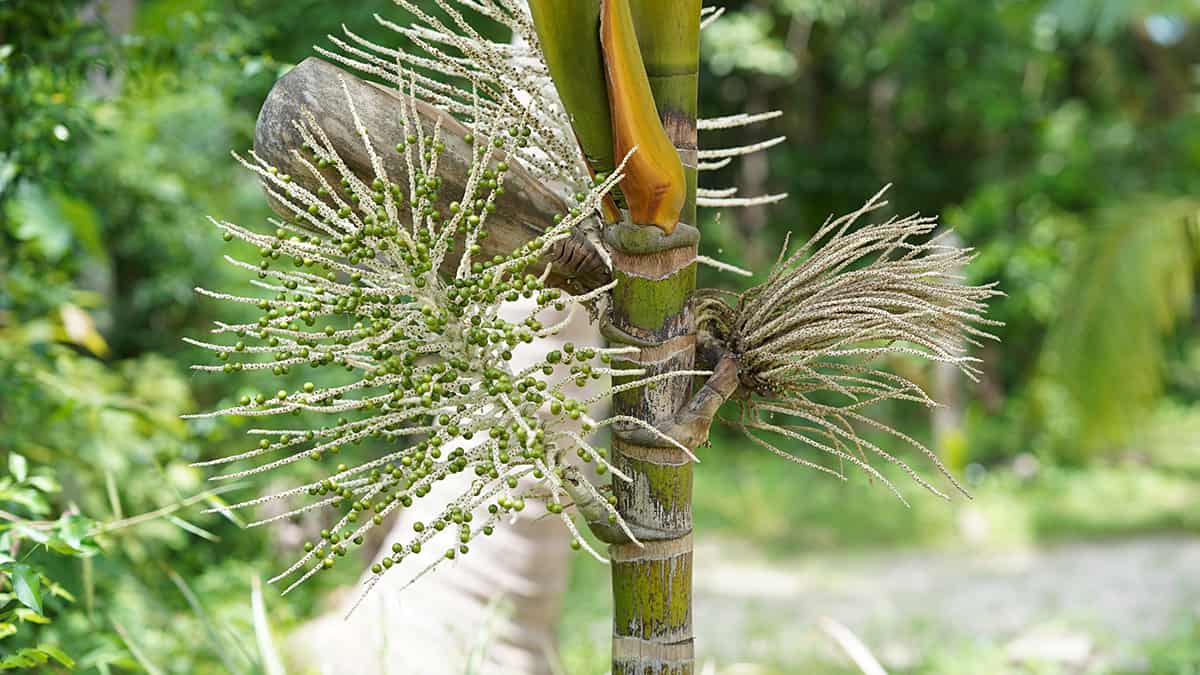
The Acai palm tree thrives in full sun to partial shade. As this tree will typically reach between 80 and 90 feet in height, it is rarely considered an understorey tree and will not be shaded by other species growing nearby when it reaches its full size. However, it can grow in partial shade beneath the cover of even taller trees.
It will perform best in full sun when mature but will need more moisture in the soil when kept in these conditions compared to Acai trees which are somewhat shaded. Young trees will need to be shaded beneath the canopy of taller trees as they cannot withstand full sun conditions until well established.
Soil
These trees are very adaptable when it comes to soil types, and they can grow well in sandy soils, loamy soils, and clay soils. Acai palms do prefer well-draining soil where possible, but they will adapt to poorly-draining soils.
They are best grown in mildly acidic or neutral soils. However, they can also tolerate exceptionally acidic soil types.
Water
Acai palms should be grown in soils that are kept consistently moist. They don’t fare well in times of drought, despite being native to extremely hot climates. In their native region of eastern Amazonia, there is frequent and heavy rainfall through most of the year which will provide all of the moisture an Acai tree needs.
If you are growing an Acai palm outside of its native region, you will need to offer supplemental water to ensure the soil is not allowed to completely dry out. Aim to make sure the soil remains damp to the touch but not so soggy to the point that it is waterlogged. Mulching over the soil of an Acai palm will help with moisture retention, as it will reduce evaporation and keep the soil insulated.
Temperature

Acai palm trees are suitable for growing in USDA hardiness zones 10 to 12. These are amongst the hottest zones, where on average, temperatures do not drop beneath 40 °F (4.4 °C). Acai trees will not withstand frost or freezing temperatures, so in climates that experience frost, the trees will need to be protected or overwintered inside.
Any temperatures lower than 40 °F (4.4 °C) will not be tolerated, and a drop in temperatures beneath this can be enough to kill even a mature tree. Acai palms will fare best in climates with an average annual daytime temperature of 77°F (21 °C) to 82 °F (28 °C).
Humidity
Acai palms are accustomed to high levels of humidity. If grown outside of their native habitat, you will need to ensure high moisture content levels in the air to keep the palm healthy.
Humidity levels of between 70 to 90% are ideal. Greenhouses are great for creating a humid environment, but if you grow your acai palm outside then you’ll need to take measures to increase humidity, for example, spraying the leaves with a water mister every day.
Fertilizer
Acai palms will benefit from a fertilizer treatment at the beginning of the growing season and again midway through the growing season. A fertilizer specifically for palms will be ideal, but otherwise, an all-purpose balanced fertilizer will work just fine.
You can also increase the nutrients available to an Acai palm by improving the fertility of the soil they are growing in. This can be done by working in organic compost to the top layer of the soil at any time of year.
Acai Palm Tree FAQs
Are Acai Palms Fast Growing?
Acai palm trees are one of the fastest-growing types of palm trees, gaining 2 to 3 feet in height each year. By the time these trees are five years old, they can be up to 15 feet tall, and it is at this time that they will start to produce fruits. Once the Acai palm begins to fruit, it will continue to provide harvests for around 30 years.
What are Acai Berries?
Acai berries are technically not berries at all. Instead, they are a type of fruit known as a drupe. They measure around one inch across at maturity and grow in dense clusters which hung from cascading slender branches on the Acai palm. These berries are dark blue in color and actually look remarkably similar to blueberries.
Unlike blueberries which are sweet when ripe, acai berries have a bitter taste that is more in line with that of blackberries. Acai berries are a very popular type of superfood, which can be eaten raw, added to smoothies, or they can also be cooked. These fruits have a short shelf-life so they are also widely dried in order to preserve them. You can eat dried acai berries straight from the packet, or they can make a nice addition to granola bowls, trail mixes, or salads.
When Can Acai Palms Be Harvested?
A typical Acai palm tree will begin to produce fruit when it is four or five years old. These trees usually produce fruits in the fall; however, when grown in tropical climates, they will have an extended harvest period that stretches from April right through to November.
During this time, there will typically be two heavy harvests, with each tree producing thousands of fruits in each harvest. In the Amazon rainforest, people have to scale heights of between 60 and 70 feet to remove the acai berries from the trees. This is a dangerous job that can be carried out more safely with the use of special harnesses. Each bundle of fruit gathered at a time will weigh between 20 to 30 pounds, requiring a good degree of balance.
Are Acai Berries Good For You?
The acai berry market has been expanding rapidly since the marketing of these fruits as a superfood and health food. They are known to be high in antioxidants which can prevent cell damage in the body, and in fact, they contain a higher proportion of antioxidants than other healthy berries, including blueberries and cranberries.
The consumption of acai berries is linked to lower blood sugar levels and an improved immune system, and these berries are also eaten with the intention of reducing obesity and improving athletic performance.
There are very few studies that support the use of acai berries as a superfood. However, the clever marketing of this exotic fruit has certainly had an impact on the global market. Reports indicate that the global Acai Berry market was valued at USD 1144.45 million in 2022, and this is predicted to expand to reach USD 2042.76 million by 2028.
